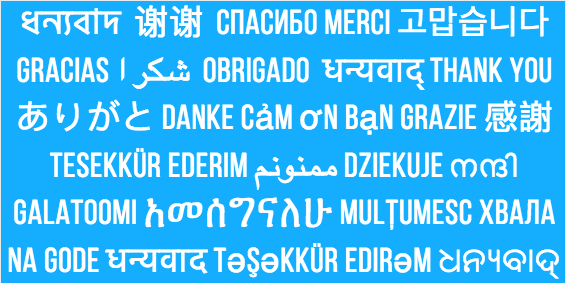
Blog
Machine Translation Report
What is the optimal MT Engine for you? Find out in the latest MT Report by Memsource.

With 93% of all online experiences starting with a search engine, it’s no wonder marketing directors and business owners are wanting to get a piece of the pie. According to Sarah Pokorna-Presch, Managing Director at Retro Digital, this is how to build an international search engine optimization strategy that excels.
With so much emphasis on SEO in your home market, you probably haven’t had time to even think about implementing an international search engine strategy (ISEO). But if you’re looking to succeed and save money at the same time, starting your localization journey with SEO in mind is going to do just that.
Think Big Picture
When you’re going global, you need to think of the bigger picture from day one. Marketing plans are put together months in advance, and website translation is just one of the building blocks of a successful global marketing strategy.
We’re constantly being told that if you want to grow abroad you need to localize your website, but that’s not enough anymore. In order to give your strategy the strongest foundation possible though, you need to think SEO the second you start thinking about localizing your website.
Your Target Market
Before you begin, you need to have a think about where you’re going to target. If you’re an LSP, you can help your customers do this by giving them some pointers. Rather than using standard market research which doesn’t really reflect what’s really going on inside your company; use tools like Google Analytics to see where your current site visitors are coming from and where you’re already getting organic search visibility.
If you want to take things a step further, you can look into organic CTRs for certain markets to see which ones are performing the best. Plus you can see which keywords people are searching for when they land on your site. Once you’ve made an informed decision about where to target, you need to move on to the keyword research before you even start to think about localizing.
Keyword Research
Keywords are, well, your key to success. This is why it’s worth putting a lot of effort into choosing the right ones and that means taking into account cross-cultural brand consistency.
Typically keywords shouldn’t be translated – they need to be transcreated. Or perhaps not touched at all, as some industries, e.g. medical and IT, tend to use English terms even if English isn’t the country’s official language. You need to think about what local searchers are searching for, and adapt your keywords to fit local search patterns.
Once you’ve transcreated the keywords, it’s paramount you check how many people are searching for them, because it’s pointless to put in a lot of effort for a term no one is looking for. Use tools like Google Keyword Planner, SEMRush, or MOZ to find out your transcreated keyword’s search volumes. You can also use the search volumes to see if people in that particular country really are searching for products/services like yours.
Now that you have your carefully crafted list of keywords, you can begin to think about where to apply them.
SEO + Your Translation Process
Begin by stripping your website back to the basics. Just like in any form of marketing, you need to evaluate what works and what doesn’t. Different markets have different cultures and different things make people tick — that’s a lot of differences to keep in mind about who you’re wanting to attract. Then consider your services – are you offering the same services everywhere or do they vary depending on the region? If you’re the latter, you need to change your website content to convey that.
Next you should assign appropriate keywords to your website pages. As a rule of thumb, you should use 2-3 keywords per page, including one branded keyword. Any more than that and you’ll get penalized for keyword stuffing. The keywords also need to be relevant to the page and most importantly, be used naturally.
Order of Operations
If you’re worried about translation costs, one way to significantly lower them is to ask your translation agency to write SEO content rather than translating your website first. The reason for this is because one of the main ranking factors for SEO is on-page optimization, and search engines have set rules on how content should be written. If you’re not following these rules at the time of translation, you’re going to have to go back and write content again, doubling the work.
When dealing with content, your translation agency should also translate titles, meta descriptions, alt text, urls, and H1s etc., following SEO best practices. Make sure that your chosen keywords are placed naturally – there’s nothing worse than spammy-sounding SEO text (and it’ll get you into trouble with Google).
Google and Beyond
One thing you have to realize when going global is that optimizing for Google isn’t enough.
Just like taking note of cultural differences in the words people search for, also note the differences in search engines. To make things a little more complicated, every single search engine has different ranking factors. This is why it’s so essential to work with a professional partner who understands all the nitty gritty details of SEO, and not just someone who offers to throw keywords into a translation.
Measuring Your Success
The fact that translation buyers are often unwilling to pay for a quality translation is no secret. But there is a way to try and combat this. The great thing about digital marketing is that everything is measurable, SEO included.
By using digital marketing metrics and analytics tools, you can measure your client’s website before translation, and track its success afterwards. Once you show your client results and prove that their increase in revenue can be linked straight back to multilingual SEO/organic traffic, you’ll have no problem persuading them to invest in multilingual SEO again.
About the Author


Sarah Pokorna-Presch is the Managing Director of Dublin-based digital marketing agency Retro Digital, helping companies expand abroad with tailor-made international & multilingual marketing solutions.



